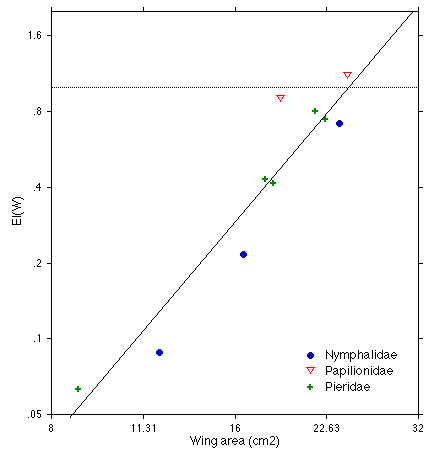|
2000. Flexural stiffness patterns of butterfly wings. Steppan, S.J. Journal of Research on the Lepidoptera.
|
|
2000. Flexural stiffness patterns of butterfly wings. Steppan, S.J. Journal of Research on the Lepidoptera.
|
A flying insect generates aerodynamic forces through the active manipulation of the wing and the "passive" properties of deformability and wing shape. To investigate these "passive" properties, the flexural stiffness of fore wings belonging to ten butterfly species was compared to gross morphological parameters to determine allometric relationships The results show that flexural stiffness scales with wing loading to nearly the fourth power (pw3.9) and is highly correlated with wing area cubed (S3.1). The generalized map of flexural stiffness along wing span shows a reduction in stiffness near the distal tip and a large reduction near the base. The distal ends of wings are stiffer against forces applied to the ventral side, while the basal region is much stiffer against forces applied dorsally. The null hypothesis of structural isometry as the explanation for flexural stiffness scaling is rejected. Instead, selection for a consistent dynamic wing geometry (angular deflection) in flight appears to be the major factor controlling general wing stiffness and deformability. Possible relationships to aerodynamic and flight habit factors are discussed.
Fig. 4a. Wing stiffness map for a Vanessa cardui individual. Below is a diagram of the wing, drawn to the same scale as the X-axis of the stiffness map. The loading bar was oriented parallel to the Y-axis.

Fig. 5. Index of flexural stiffness, EI(W), versus wing area, S. Log-log scale. RMA equation is lnEI(w)=3.1S-9.78 (r2=0.911).